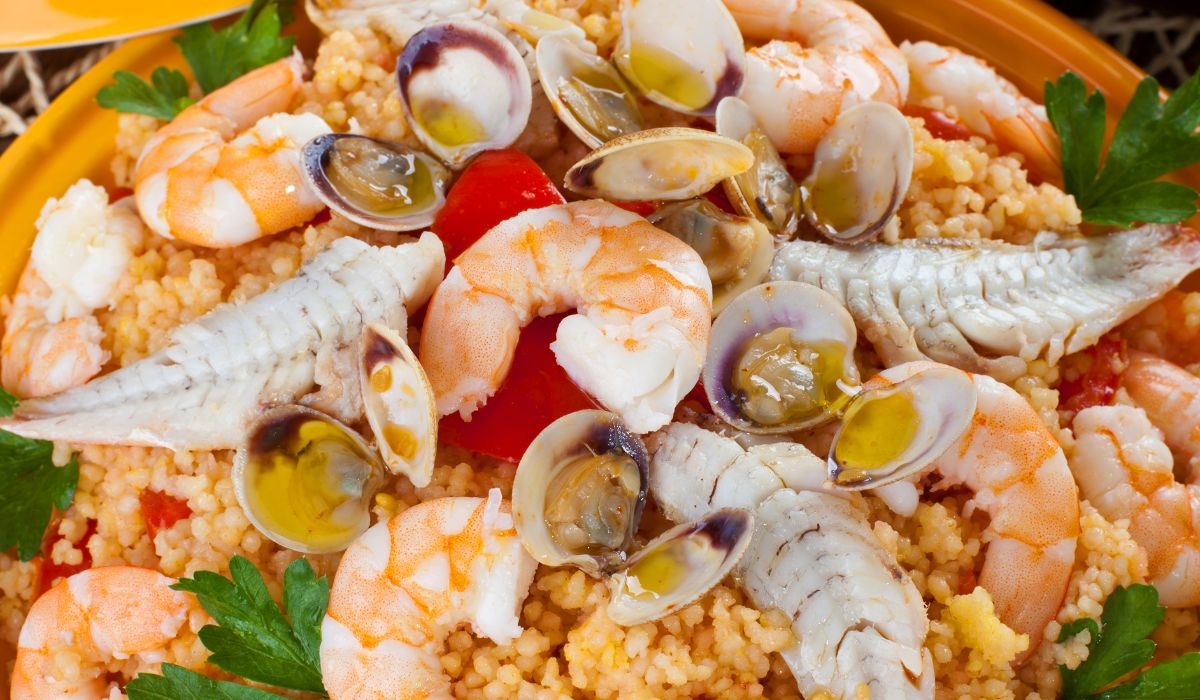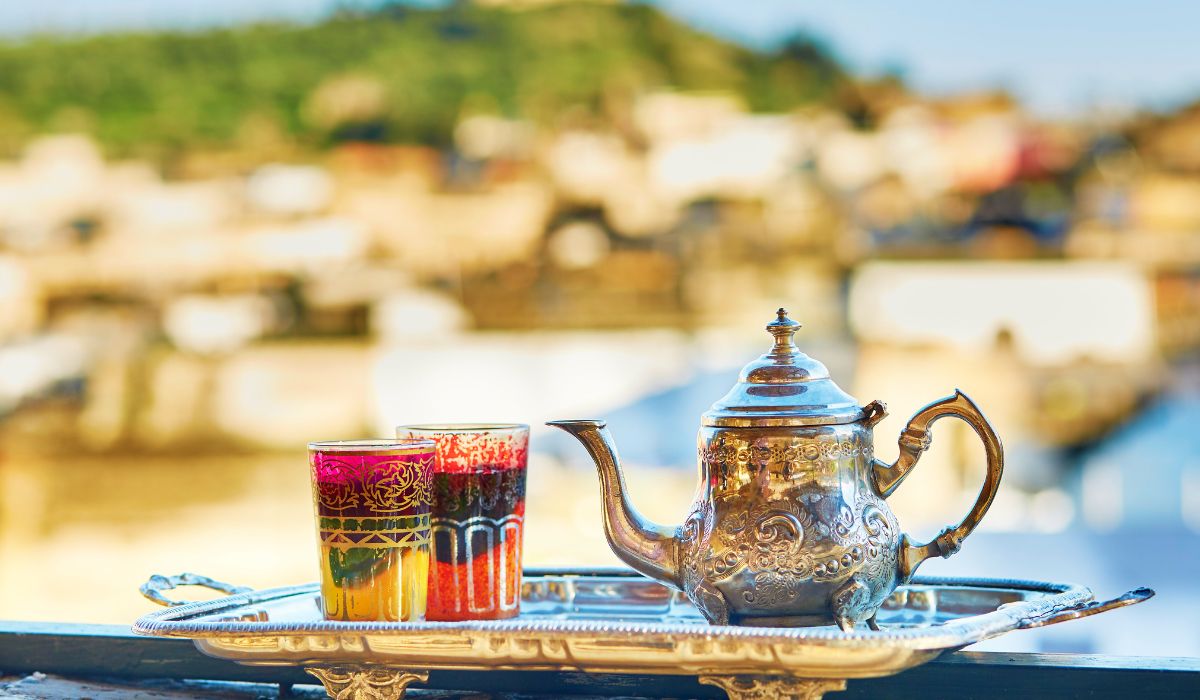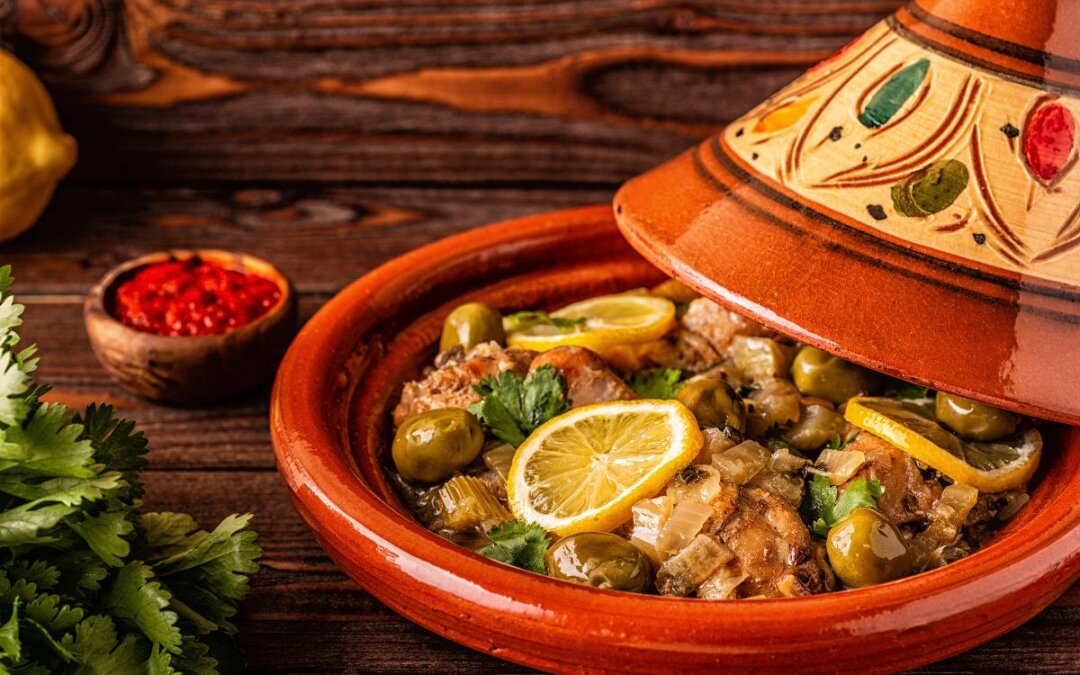Unpacking the Flavors of Morocco
Spices are central to Moroccan cooking. Cumin adds warmth to many dishes, while cinnamon brings a sweet note to both savory and sweet foods. Coriander offers a lemony flavor, and paprika adds color with a mild kick of heat. Turmeric contributes an earthy taste and a vibrant yellow hue, while saffron, prized for its unique flavor and golden color, is used sparingly due to its high cost. These spices are often combined to create complex layers of flavor, especially in tagines, couscous dishes, and meat rubs.
Fresh ingredients are also essential in Moroccan cooking. Markets overflow with vegetables like tomatoes, peppers, and eggplants. Fruits like dates, figs, and oranges are key in both sweet and savory dishes. As a top producer of olive oil, Morocco uses it abundantly in cooking and as a condiment. Fresh herbs like mint and parsley add bright, fresh notes to many dishes, often appearing in salads and teas.
Morocco’s Most Beloved Dishes

Moroccan cuisine is known for its rich flavors and unique preparations, with iconic dishes that showcase the country’s culinary heritage and traditional ingredients.
Couscous
Couscous is a staple in Moroccan cooking, made from semolina and prepared in various ways. It’s often served with vegetables and meat, creating a hearty, flavorful meal. Common couscous dishes include lamb and vegetable couscous, chicken and chickpea couscous, and seafood couscous. The grain is steamed to a fluffy perfection, soaking up the flavors of the accompanying meat and vegetables. Couscous can also be enjoyed in sweet dishes, mixed with dried fruits and nuts for a different twist.
Pastilla
Pastilla is a unique Moroccan pie that blends savory and sweet flavors. Traditionally made with chicken, you might also find versions with pigeon or seafood. The filling consists of shredded meat, almonds, eggs, and spices like ginger and cinnamon. Thin layers of pastry wrap around the filling, and the pie is baked until golden, then dusted with powdered sugar and cinnamon. Each bite offers a delightful mix of flavors and textures.
Tagine
Tagine refers both to a cooking pot and the dish prepared in it—a slow-cooked stew that’s a cornerstone of Moroccan cuisine. You’ll find many varieties of tagine across the country, with popular combinations like lamb with prunes and almonds, chicken with preserved lemons and olives, and vegetable tagine with chickpeas. The cone-shaped lid of the tagine pot traps steam, keeping the meat tender and infusing it with aromatic spices. Tagines are often served straight from the pot, allowing you to experience the full sensory delight of the dish.
Regional Flavor

Morocco’s cuisine varies greatly depending on where you are—from the coast to the mountains to its ancient cities. Each region offers its own special dishes and cooking methods, showcasing local ingredients and a rich history.
Casablanca
Casablanca’s cuisine highlights the bounty of the sea, with fresh fish and seafood dishes found everywhere. Grilled sardines are a local favorite, and seafood tagines—where fish is cooked with vegetables and spices in a clay pot—are a must-try. Don’t miss the oysters from nearby Oualidia, known for their salty-sweet flavor. Casablanca blends Mediterranean and Arab influences, evident in dishes like fish pastilla, a savory pie wrapped in flaky pastry. The city’s food scene is dynamic, with new twists on traditional recipes constantly emerging.
Berber
In Morocco’s mountains, Berber cooking traditions come to life. The cuisine here is hearty, designed to warm you up on cold nights, with stews featuring local lamb or goat meat. Couscous, a staple in this region, is often served on Fridayscin most homes. Look for tagines that incorporate dried fruits and nuts, a mountain specialty. Tanourt bread, baked in clay ovens, is perfect for dipping in olive oil. Berber hospitality is legendary, and you might find yourself invited to share a meal in someone’s home, experiencing the warmth of their culture firsthand.
Fes
Fes, an ancient city, is renowned for its rich culinary heritage. Here, you’ll encounter complex flavors that reflect centuries of cooking traditions. The medina is filled with food stalls and restaurants offering a taste of the city’s delights from pastilla to tanjia, a dish where meat is slow-cooked in a clay pot until it’s incredibly tender. Don’t miss out on dining at a riad, a traditional house, is a special experience—many serve set menus that showcase local specialties, each dish telling the story of Morocco’s diverse cultural heritage.
Moroccan Street Food and Snacks

Exploring Moroccan street food offers a flavorful glimpse into local culture, with a mix of sweet and savory bites that will make your taste buds dance.
Navigating the Medina with a Foodie Lens
The medinas of Morocco are a food lover’s paradise. As you weave through narrow alleys, your nose will lead you to hidden culinary gems. Look for small stalls and carts offering fresh snacks. Briouats—crispy pastry triangles filled with meat or cheese—are perfect for a quick bite as you explore. You’ll also find vendors grilling kebabs and brochettes, their fragrant spices drawing you in.
Don’t hesitate to ask questions. Locals are usually happy to explain their specialties. Keep some small change handy for easy transactions.
Tea Time: Mint Tea and Sweets
Mint tea in Morocco is more than just a drink—it’s a ritual. You’ll see people sipping it everywhere. Sweet and refreshing, it’s often enjoyed with a variety of treats. Tea shops in the medina offer a peaceful escape from the bustling streets, where you can sample different types of mint tea and learn about the brewing process.
Pair your tea with chebakia, a honey-soaked pastry shaped like a flower—sweet, crunchy, and perfect with a cup of tea. You might also find date-filled cookies or almond pastries to enjoy alongside your drink.
Must-Try Street Eats
Here are some Moroccan street food dishes you shouldn’t miss:
- B’ssara: A hearty fava bean soup, often enjoyed for breakfast.
- Sfenj: Moroccan donuts, crispy on the outside and soft inside.
- Harira: A thick soup made with lentils, tomatoes, and chickpeas.
- Makouda: Deep-fried potato balls, crispy and full of flavor.
For a quick lunch, grab a sandwich filled with kefta (spiced meatballs) or grilled vegetables. Look for stalls with long lines—they’re usually the best! And don’t forget to try the fresh juices; orange juice stands are common and offer a sweet, refreshing drink.
All in all, meals in Morocco are about more than just eating. They’re a chance to connect, share stories, and experience the country’s legendary hospitality firsthand.
Hire Me as Your Personal Travel Advisor
Want to explore Morocco’s culinary delights but feeling overwhelmed? I’m here to help! As your personal travel advisor, I’ll create a custom food journey just for you.
I’ll plan your entire trip, focusing on the best local eateries and food experiences. From street food tours to cooking classes, I’ve got you covered.
You’ll get:
- A tailored itinerary based on your tastes and budget
- Reservations at top restaurants
- Tips on local customs and dining etiquette
- Recommendations for food markets and specialty shops
My expertise goes beyond just food. I can also arrange:
- Luxury Accommodations
- Transportation
- Sightseeing activities
With my help, you’ll avoid tourist traps and discover hidden gems. You’ll taste authentic Moroccan flavors and create unforgettable memories.
Ready to embark on a mouthwatering adventure? Let’s chat about your dream Morocco food trip today!

